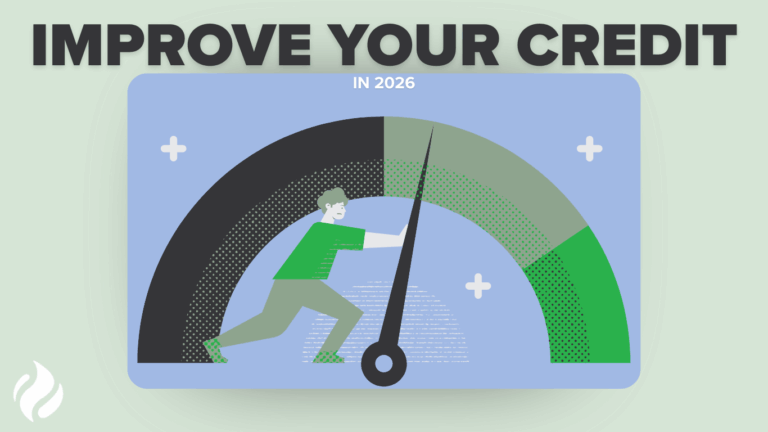Electromagnetic Spectrum: The Spectrum Of Light Waves Plays A Crucial Role In The Functionality Of Solar Panels
Electromagnetic Spectrum and Photovoltaic Efficiency
Ever wondered why solar panels are blue or black? It’s not just for aesthetics – it’s all about the electromagnetic spectrum.
Sunlight, or solar energy, encompasses a range of electromagnetic waves, each with unique characteristics. One might ask, “Why does this matter to a solar panel?” It’s simple – photovoltaic efficiency.
Photovoltaic Efficiency
Photovoltaic efficiency refers to the ability of solar cells to convert sunlight into electricity. Are all wavelengths equally efficient? Unfortunately, no. Solar cells preferentially absorb certain wavelengths, specifically those in the visible range. This is why they appear blue or black – they’re soaking up all that useful, visible light!
Understanding the Spectrum
The electromagnetic spectrum is divided into several sections:
- Radio waves
- Microwaves
- Infrared
- Visible light
- Ultraviolet
- X-rays
- Gamma rays
Visible light, with wavelengths from 400 to 700 nm, is the ‘sweet spot’ for solar energy conversion. But what about the rest of the spectrum?
Into the Infrared
Infrared radiation, with longer wavelengths than visible light, carries less energy. This energy is largely wasted by conventional solar cells, being transformed into heat rather than electricity. Could this be a missed opportunity? Scientists think so, and they’re working on ways to harness this ‘wasted’ energy. Talk about seeing the light in a new way!
Solar Radiation Spectrum: A Kaleidoscope of Energy
Have you ever wondered about the vibrancy of the sun’s electromagnetic radiation? The solar radiation spectrum is more than just visible light. It’s a dazzling array, a spectrum of energy, that extends from radio waves to gamma rays.
The Spectrum in Detail
- Radio waves: The longest wavelengths, and thus the least energy. They’re like a gentle hum in the cosmic symphony.
- Microwaves: Slightly more energetic, these waves heat our leftovers and guide our GPS.
- Infrared: These waves warm the Earth, like a cozy blanket on a chilly night.
- Visible light: The colors we see, a vibrant display of the sun’s energy at work.
- Ultraviolet: Powerful rays, unseen by the human eye, but felt as the sun’s heat. They’re the invisible dragons of the spectrum!
- X-rays: High energy waves, used in medicine to see inside the body and in space to observe celestial bodies.
- Gamma rays: The most energetic waves of all, created in nuclear reactions and supernova explosions. They’re the superheroes of the spectrum!
Isn’t it fascinating that our sun, a main sequence star, can emit such a wide range of energy?
But what does this have to do with solar panels? Well, certain parts of the spectrum, particularly visible light and infrared, are harnessed to create power. The energy from the sun interacts with the solar cells, knocking electrons loose and generating electricity.
The Unseen Power of the Sun
From the gentle hum of radio waves to the mighty roar of gamma rays, the solar radiation spectrum is a testament to the unseen power of the sun. It’s not just light and warmth, but a symphony of energy that powers our world. And with solar panels, we can tap into this energy, transforming it into electricity to power our lives. Now, isn’t that something to marvel at?
Impacts of Spectrum Wavelengths on Solar Panels
Have you ever wondered why solar panels display varying efficiency levels? The answer lies in the electromagnetic spectrum and its wavelengths. Solar panels harness energy from the sun’s light, a spectrum filled with different wavelengths.
Primarily, solar panels capture visible light, but what about infrared and ultraviolet light? You see, these wavelengths, although part of the sun’s light, do not contribute significantly to solar energy conversion. They are, in fact, the culprits behind some of the obstacles faced in solar energy harvesting.
Infrared Light and Solar Panels
Infrared light, with its longer wavelengths, carries less energy than visible light. It mostly ends up as heat on the solar panel’s surface. Now, here’s a twist. While we might appreciate the warmth on a cold day, solar panels don’t. Increased heat reduces their efficiency, a phenomenon known as the temperature coefficient.
Ultraviolet Light and Solar Panels
Then there’s ultraviolet light, the shorter wavelength spectrum. Similar to how it can harm our skin, ultraviolet light can degrade the solar panel’s surface over time. This can lead to a reduction in the panel’s lifespan and, subsequently, its energy output.
Optimizing Efficiency
- Manufacturers often use anti-reflective coatings to limit the impact of these wavelengths and improve the panel’s absorption of visible light.
- Advanced designs incorporate cooling systems to manage the excess heat from infrared light.
- Protective layers shield the panels from ultraviolet light, increasing their durability and performance over time.
In a nutshell, the impact of spectrum wavelengths on solar panels is a balancing act, a dance between harnessing useful light and mitigating potential damage. An intriguing interplay, don’t you think?
Harnessing Ultraviolet and Infrared Rays
Ever wonder about the untapped potential in the sun’s rays? Beyond the visible light, there are ultraviolet and infrared rays. These rays are often overlooked when we think about solar energy, but they hold remarkable potential.
Ultraviolet Rays: A Hidden Power Source
Ultraviolet rays make up only a small fraction of the sun’s energy, yet they’re responsible for sunburns. Imagine harnessing that power! While traditional solar panels primarily convert visible light into electricity, strides are being made in developing panels that can absorb UV rays too. Isn’t that an exciting prospect?
Infrared Rays: The Unsung Heroes
Let’s shift our focus to infrared rays. Did you know that more than half of the sun’s energy reaching Earth is in the form of infrared light? This is the warmth we feel from the sun. Imagine if we could efficiently convert it into usable energy! The good news is, research is underway to develop solar panels that can capture and convert these rays.
Overcoming Hurdles
- Efficiency: Capturing UV and infrared rays is one thing, converting them efficiently is another. How can we make the process more effective?
- Cost: As with any new technology, the initial costs are high. How can we make it affordable for the masses?
- Reliability: UV and infrared rays are available around the clock, unlike visible light. But how can we ensure the reliability of the technology?
Innovations in this field could revolutionize solar energy. Imagine a world where we tap into the full spectrum of the sun’s rays. It’s not a matter of if, but when.
Optimizing Solar Panels for Electromagnetic Spectrum
Ever pondered why we don’t harness the full potential of the sun’s energy? The secret lies within the understanding of the electromagnetic spectrum. Imagine standing on a beach, feeling the warmth of the sun. That’s infrared energy. But what about the unseen ultraviolet rays? They’re there too, a part of the sun’s vast spectrum of energy.
Standard solar panels primarily convert visible light into electricity. But what if we could optimize them to absorb more?
Ultraviolet and Infrared – The Untapped Potential
It’s akin to listening to a symphony and ignoring the violins and cellos. Most solar panels are blind to ultraviolet and infrared light. Researchers are now developing multi-junction solar cells capable of absorbing these invisible rays. Can you fathom the boost in efficiency?
Solar Panels and the Light Spectrum – A Harmonious Duet
A novel approach to this is the creation of a photon upconversion process. Picture a solar panel that could convert low-energy light to high-energy light. It’s like turning whispers into shouts. This could potentially allow panels to absorb a wider range of the spectrum, and increase their output.
Conclusion
Unlocking the full potential of the electromagnetic spectrum could revolutionize solar energy. It’s time we stopped viewing the spectrum as a limitation, but rather an opportunity for innovation. Will this be the future of solar energy? Only time will tell.
Electromagnetic Spectrum
Pronunciation: /iˌlektrōˈmaɡnəˌtik ˈspektrəm/
Definition
The electromagnetic spectrum is the range of all types of electromagnetic radiation. Radiation is energy that travels and spreads out as it goes – the visible light that comes from a lamp in your house and the radio waves that come from a radio station are two types of electromagnetic radiation.
Details
The electromagnetic spectrum includes, in order of increasing frequency and decreasing wavelength: radio waves, microwaves, infrared radiation, visible light, ultraviolet radiation, X-rays and gamma rays.
Usage in a sentence
“The electromagnetic spectrum plays a crucial role in modern technology, with various segments being used for applications ranging from medical imaging to telecommunications.”
For more information about Electromagnetic Spectrum contact Lumina Solar today.
Useful Links
Parallel Circuits, Diode, Automobile Auxiliary Power Outlet, Usb, Solar Cell Efficiency, Electromagnetic Spectrum, Ultraviolet, Infrared, Monochromatic, Irradiance, W/M2, Spectrum, Airmass, Solar Irradiance, Soiling (Solar Energy), Open-Circuit Voltage, Short-Circuit Current, Watt-Peak, Voltmeter, Potential-Induced Degradation, Boron, Photovoltaic Mounting System, Solar Power Plant, Agrivoltaics, Bifacial Solar Cells, Solar Canopy, Solar Array, Patio Cover, Zenith Angle, Azimuth Angle, Occupational Hazards Of Solar Panel Installation, Cadmium Telluride, Gigawatt, Gigawatt, Experience Curve Effects, Photovoltaics, Grid Parity, Mains Electricity, Balance Of System, Solar Energy, Applications Of Photovoltaics, List Of Solar-Powered Products, Photovoltaic Power Station, Solar Hybrid Power Systems, Concentrated Photovoltaics



